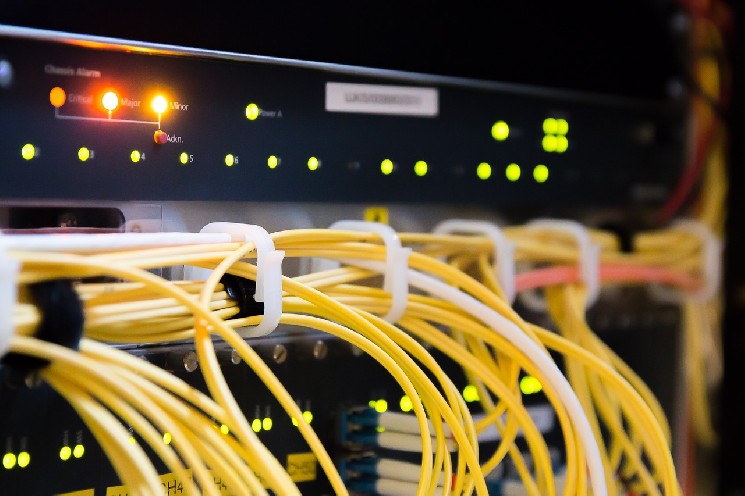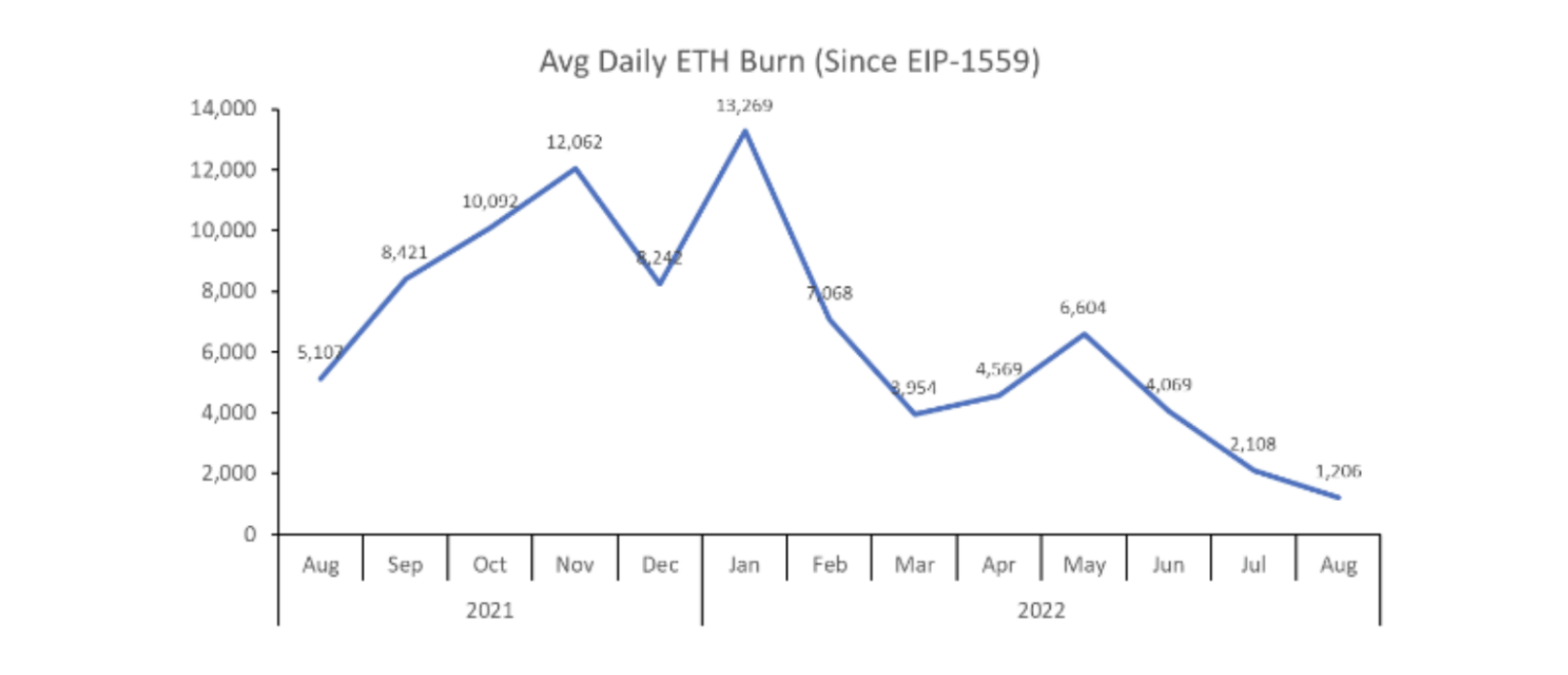Ethereum Merge May Not Be Immediately Deflationary, Crypto Trading Firm QCP Says

Ethereum’s long-awaited technological overhaul, the Merge, is just a week away and holders of the blockchain’s native token ether (ETH) may be feeling giddy because the upgrade is widely projected to establish ETH as a deflationary cryptocurrency – one with a depreciating supply – and bring more buyers to the market.
The supposedly bullish pivot, however, may remain elusive for some time, according to Singapore-based crypto trading giant QCP Capital.
«The uber-bullish thesis is that ETH 2.0 will immediately herald a new era of deflationary supply for ETH,» strategists at QCP wrote in a recently published report. «This is not entirely true. For now, at least.»
The QCP strategists, led by co-founder and Chief Investment Officer Darius Sit, said low network usage could delay ether’s transformation into a deflationary cryptocurrency.
«Where the bullish kicker will come is in the burn rate – which in the midst of [crypto] winter is not looking so bullish right now,» QCP strategists noted.
The burn rate – the amount of ether tokens taken out of circulation daily due to the protocol burning of a portion of transaction fees paid in the cryptocurrency – is essentially tied to the network usage, which has cooled this year due to the bear market.
Explaining the Merge and the burn rate
The Merge will combine ether’s current proof-of-work (PoW) chain with the proof-of-stake (PoS) beacon chain that went live in December 2020.
That will mark the world’s biggest smart contract blockchain’s transition to a PoS consensus mechanism, which requires market participants to hold a minimum number of coins to validate transactions – contrasted with the current PoW setup, where miners solve computational problems to verify transactions in return for rewards paid in ETH.
The transition from PoW to PoS will take out a significant amount of miner supply.
According to QCP, miners currently receive 5 million ETH annually ($8.1 billion). After the transition, that figure is estimated to drop to 1 million ETH per year in rewards paid to stakers on PoS. (The amount of rewards paid depends on the number of stakers, which, in turn, is tied to staking yields).
While that would significantly weaken supply-side pressures, ETH’s net issuance would probably dive lower only if an uptick in the burn rate accompanies the decline in rewards paid to validators.
The average daily burn recently declined to a record low of 1,206 ETH per day. That’s barely 9% of the record daily burn of 13,269 ETH registered in January. Meanwhile, 13.6 million ETH, amounting to 12% of the circulating supply of 120 million ETH, is locked in the Beacon chain, according to data tracked by blockchain analytics firm Glassnode.
Assuming the burn rate remains weak and the amount of ether staked doubles after the Merge, ether would still be an inflationary currency.
«At the current burn rate and assuming 25% of the ETH 120 million ETH supply is staked – we will have an inflation supply of ~1%/year, compared to a deflationary supply of ~2% per year if we just revert to the all-time high burn,» QCP strategists said.

The average daily ether burn rate has crashed with a sharp slowdown in the network usage in DeFi, NFTs and other crypto sectors. (QCP Capital)
Will the burn rate bounce?
Ethereum’s burn rate is tied to network usage across various segments, including decentralized finance (DeFi) and non-fungible tokens (NFTs).
Surging activity in the NFT space was one of the major catalysts for the record burn rate reached in January. Early this year, NFT marketplace OpenSea, consistently represented more than 15% of all ETH destroyed daily.
So only a dramatic increase in the activity on decentralized finance (DeFi) platforms and non-fungible tokens (NFT) would lift the burn rate.
However, per QCP, that’s unlikely in the foreseeable future as DeFi yields are at «rock bottom» and NFT profile picture hype is «flattening.»






 Bitcoin
Bitcoin  Ethereum
Ethereum  Tether
Tether  USDC
USDC  TRON
TRON  Dogecoin
Dogecoin  Cardano
Cardano  Bitcoin Cash
Bitcoin Cash  LEO Token
LEO Token  Chainlink
Chainlink  Stellar
Stellar  Litecoin
Litecoin  Hedera
Hedera  Monero
Monero  Dai
Dai  OKB
OKB  Cronos
Cronos  Ethereum Classic
Ethereum Classic  Gate
Gate  Cosmos Hub
Cosmos Hub  VeChain
VeChain  Algorand
Algorand  KuCoin
KuCoin  Stacks
Stacks  Tether Gold
Tether Gold  Zcash
Zcash  Theta Network
Theta Network  IOTA
IOTA  Tezos
Tezos  TrueUSD
TrueUSD  NEO
NEO  Polygon
Polygon  Decred
Decred  Ravencoin
Ravencoin  Dash
Dash  Zilliqa
Zilliqa  Qtum
Qtum  Synthetix Network
Synthetix Network  0x Protocol
0x Protocol  Basic Attention
Basic Attention  Siacoin
Siacoin  Holo
Holo  DigiByte
DigiByte  Status
Status  Nano
Nano  Enjin Coin
Enjin Coin  Ontology
Ontology  Waves
Waves  Hive
Hive  Pax Dollar
Pax Dollar  Lisk
Lisk  Steem
Steem  BUSD
BUSD  Numeraire
Numeraire  NEM
NEM  Huobi
Huobi  OMG Network
OMG Network  Bitcoin Gold
Bitcoin Gold  Ren
Ren  Augur
Augur  HUSD
HUSD  Bitcoin Diamond
Bitcoin Diamond